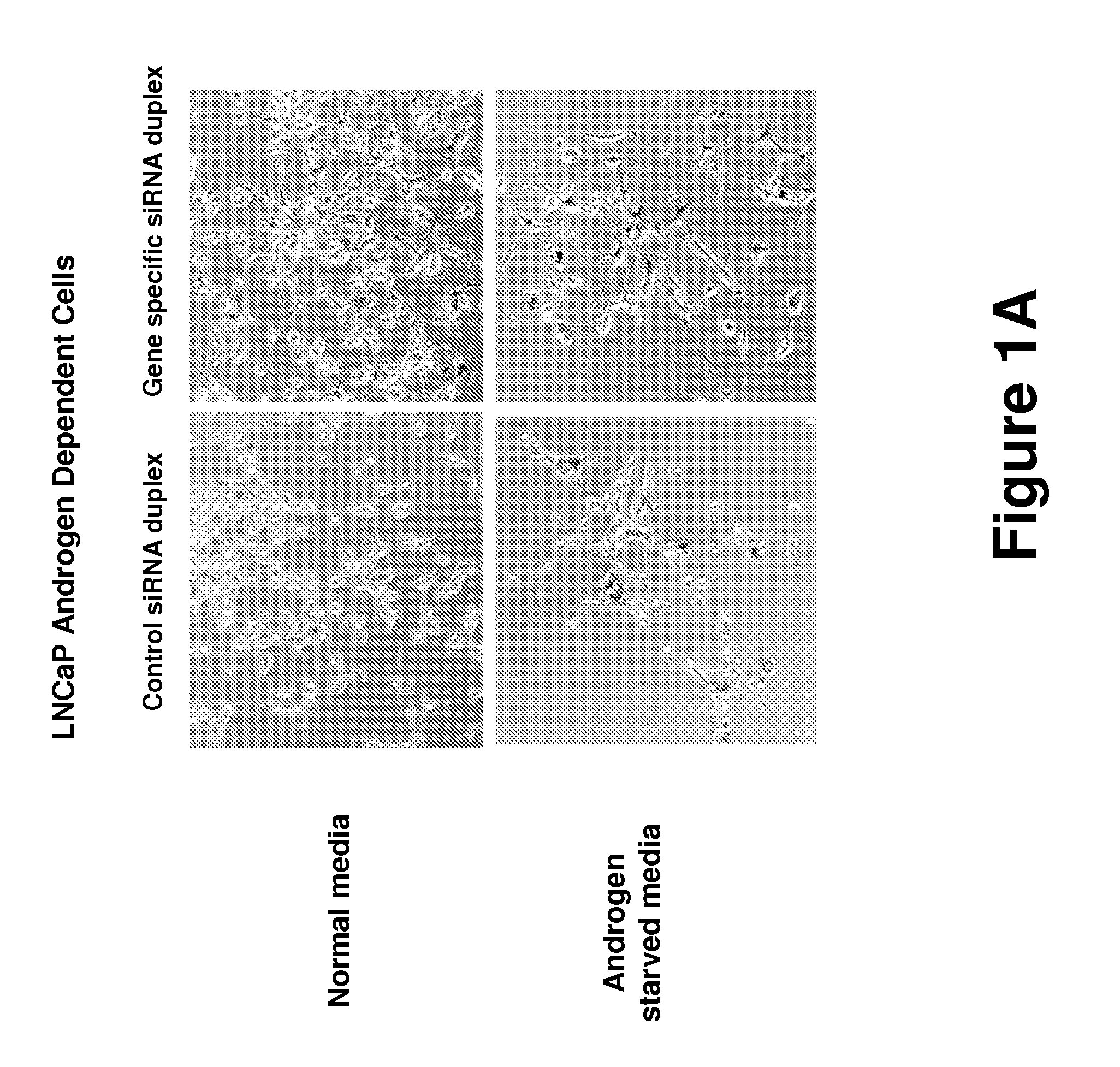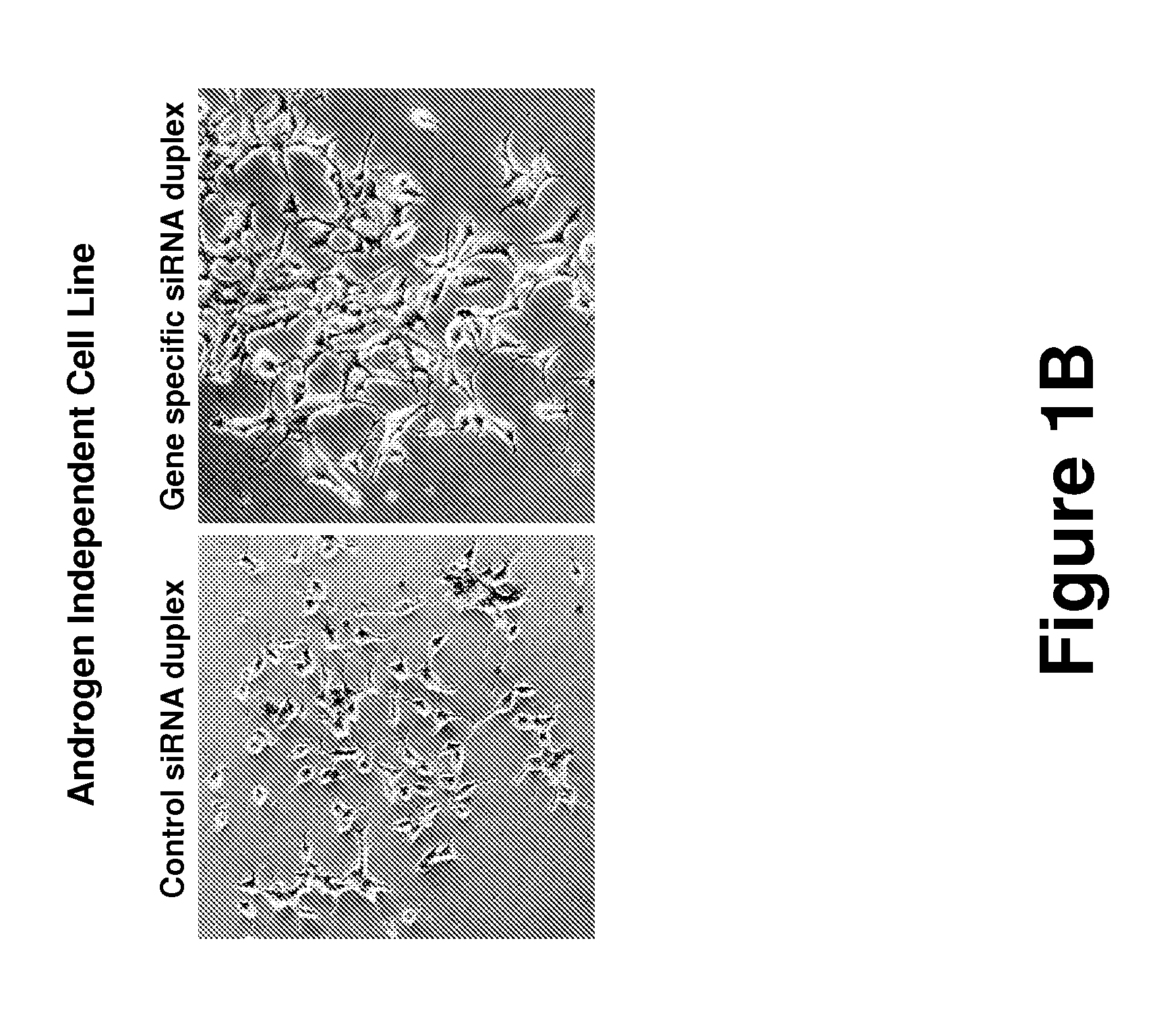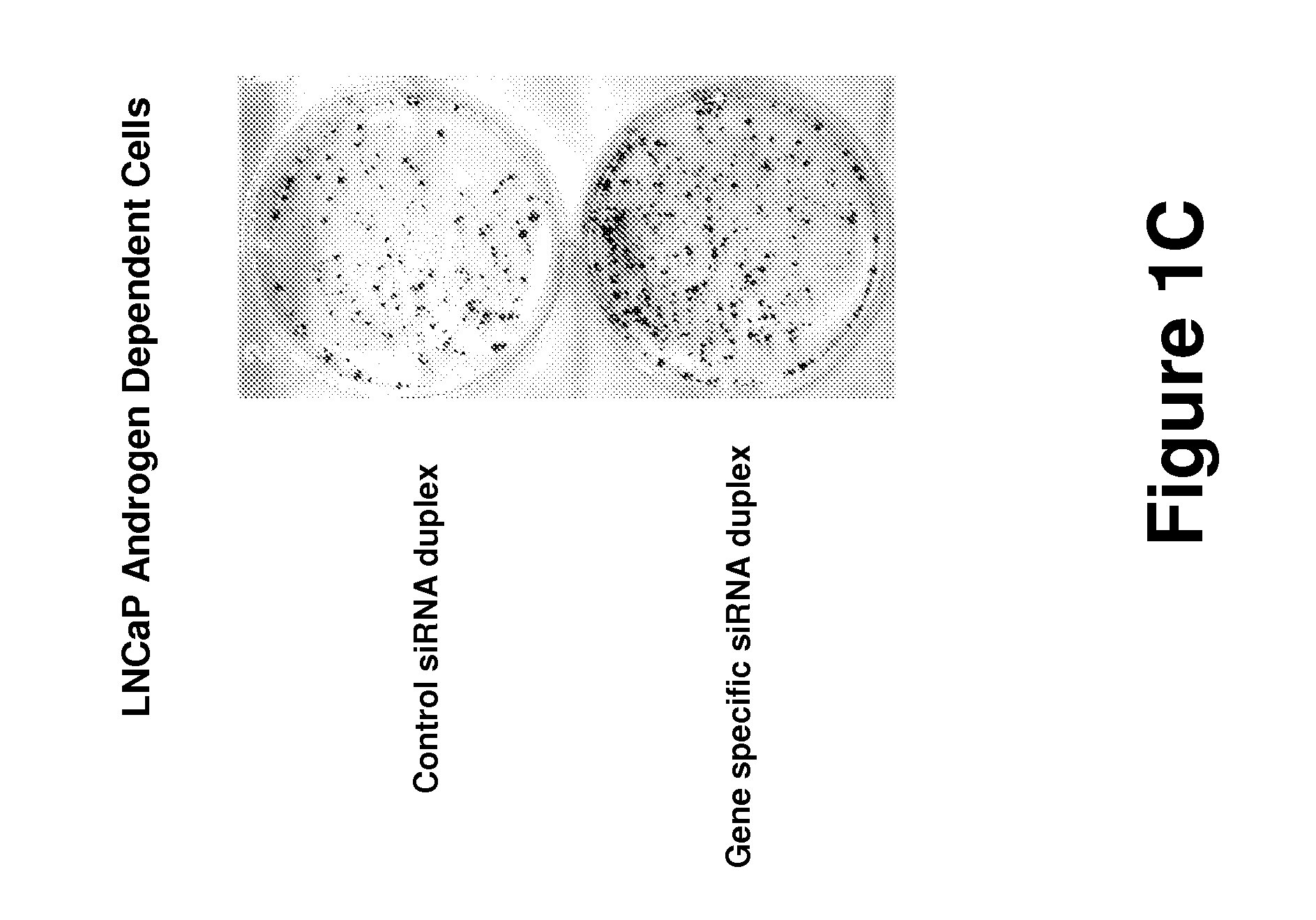Methods to determine androgen responses in prostate cells
a technology of androgen and prostate cells, applied in the field of neoplastic disease diagnosis, can solve the problems of affecting the more than 1 million people, patients experience a relapse in prostate cancer, and their families and friends, and achieve the effects of reducing prostate cell proliferation, and reducing prostate cell growth
- Summary
- Abstract
- Description
- Claims
- Application Information
AI Technical Summary
Benefits of technology
Problems solved by technology
Method used
Image
Examples
example i
Identification of Androgen-Regulated Prostate-Specific Genes
[0128]This example shows a method for identifying polypeptides having androgen-modulated expression in prostate cancer cells.
[0129]Isotope coded affinity tag (ICAT) proteomics technology (see Gygi et al., Nat. Biotechnol. 17:994-999 (1999); WO 00 / 11208) was used to identify proteins expressed in LNCaP prostate epithelia cells that undergo a change in expression upon treatment with androgen. Multiple proteins resident in the microsomal fraction of LNCaP prostate epithelia cells were found to undergo androgen-regulated expression level changes. Table 1 shows GenBank accession numbers referencing nucleotide and amino acid sequences of proteins having increased or reduced expression in response to androgen.
[0130]One of the proteins that had increased expression in response to androgen contained the peptide sequence KTVTSAANNETYCRS (SEQ ID NO:3). This protein was identified to be human RDC1 by sequence database searching, and is...
PUM
| Property | Measurement | Unit |
|---|---|---|
| PSA | aaaaa | aaaaa |
| adhesion | aaaaa | aaaaa |
| nucleic acid level | aaaaa | aaaaa |
Abstract
Description
Claims
Application Information
 Login to View More
Login to View More - R&D
- Intellectual Property
- Life Sciences
- Materials
- Tech Scout
- Unparalleled Data Quality
- Higher Quality Content
- 60% Fewer Hallucinations
Browse by: Latest US Patents, China's latest patents, Technical Efficacy Thesaurus, Application Domain, Technology Topic, Popular Technical Reports.
© 2025 PatSnap. All rights reserved.Legal|Privacy policy|Modern Slavery Act Transparency Statement|Sitemap|About US| Contact US: help@patsnap.com



